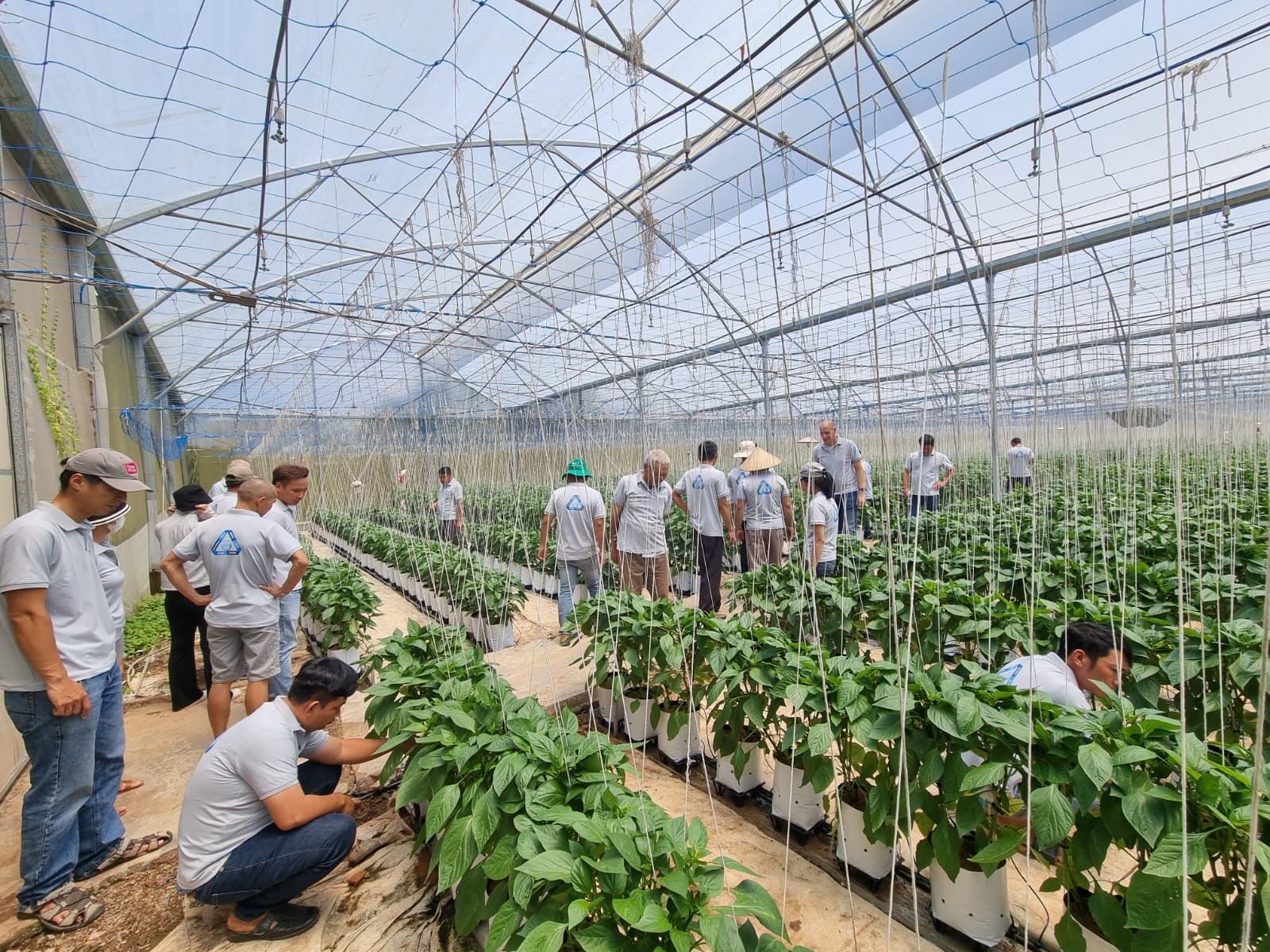Dutch Technology for Drainage Water Recycling in Vietnam
The installation of disinfection units and water tanks at two pilot farm locations in the province of Lam Dong, Vietnam, marks the start of a new phase in the “Improving water availability and safety through optimised irrigation and fertiliser application by hydroponic growers in Vietnam project”.
The project is being implemented under the Partners of Water Programme of the Dutch Government. The two pilot locations enable the project consortia to share knowledge on drainage water recycling and collect data to measure the return on investments, water efficiency and fertilizer savings.
Re-using drain water is not yet done by local growers in Vietnam, while this is common practice in the Netherlands in the horticulture sector. With the support of the Partners for Water Programme, consortia partners Fresh Studio, HollandDoor, Ridder Group and Royal Brinkman are adapting the technology applied in the Netherlands to make the re-use of drain water technically and economically feasible in Vietnam.
This practice supports the development of a more sustainable, environmentally friendly and more efficient horticulture sector as re-using drain water greatly improves the water use efficiency and prevents contamination of the environment through leaching of nutrient rich drain water into the environment. At the same time, re-using drain water reduces production costs, making growers more cost efficient.
Optimising irrigation and fertiliser application
Early September 2024, HollandDoor and Fresh Studio organised the first field days to show a drain water recycling system to interested growers and hosted several training sessions on irrigation and fertigation strategies in combination with drain water recycling.
With the arrival of two VitaLite systems from the Ridder Group and water tanks from Royal Brinkman, Thuy Farm and Garden Mountain are the first two pilot sites to collect, disinfect, and reuse drainage water. Both farms acknowledge that although they have expanded their sweet pepper production area in recent years, they are concerned about rising fertiliser costs and the limited availability of irrigation water. Water availability is becoming an issue in certain areas of Lam Dong province, especially at the end of the dry season. This scarcity is illustrated by the fact that deeper and deeper wells are being drilled to pump up irrigation water. By recycling drainage water, both farms see an opportunity to save on fertiliser and production costs, while increasing water use efficiency.
It is encouraging to see that although the project is funding approximately 2,500 square metres of drainage water collection, both farms have independently invested to expand this area to approximately 10,000 square metres for both sites. Plans are already in place to expand the drainage water collection area further in the coming period.
Seeing is believing
With the drainage water collection and disinfection system in place at both sites, the project can start collecting data to evaluate how quickly the investment in a drain water recycling system can be recouped and how much water and fertiliser can be saved. This data is important to demonstrate the benefits of a drainage water recycling system to other farms. The presence of two drain water recycling systems installed and accessible to other growers goes a long way to raise awareness among growers and help them understand how such a system works and that it is worth considering. The strong turnout and engaging discussions during the first field days, where growers visited both pilot sites, highlight the growing interest in this initiative.
Recycling drainage water impacts the irrigation and fertiliser strategies used by growers. For example, it makes it possible to work with a higher drainage percentage to optimise crop performance without increasing fertiliser costs. The ratio of nutrients applied and the monitoring of the nutrients present in the drainage water are important points to consider when recycling drainage water.

